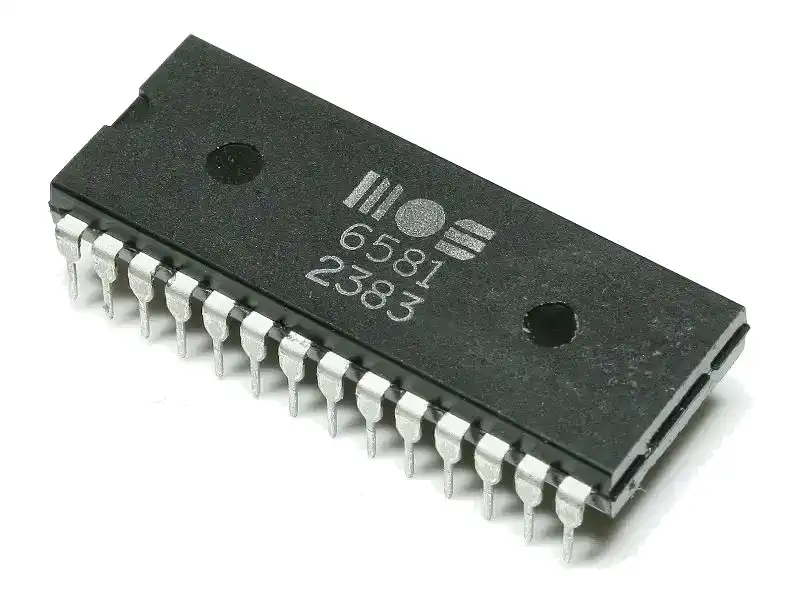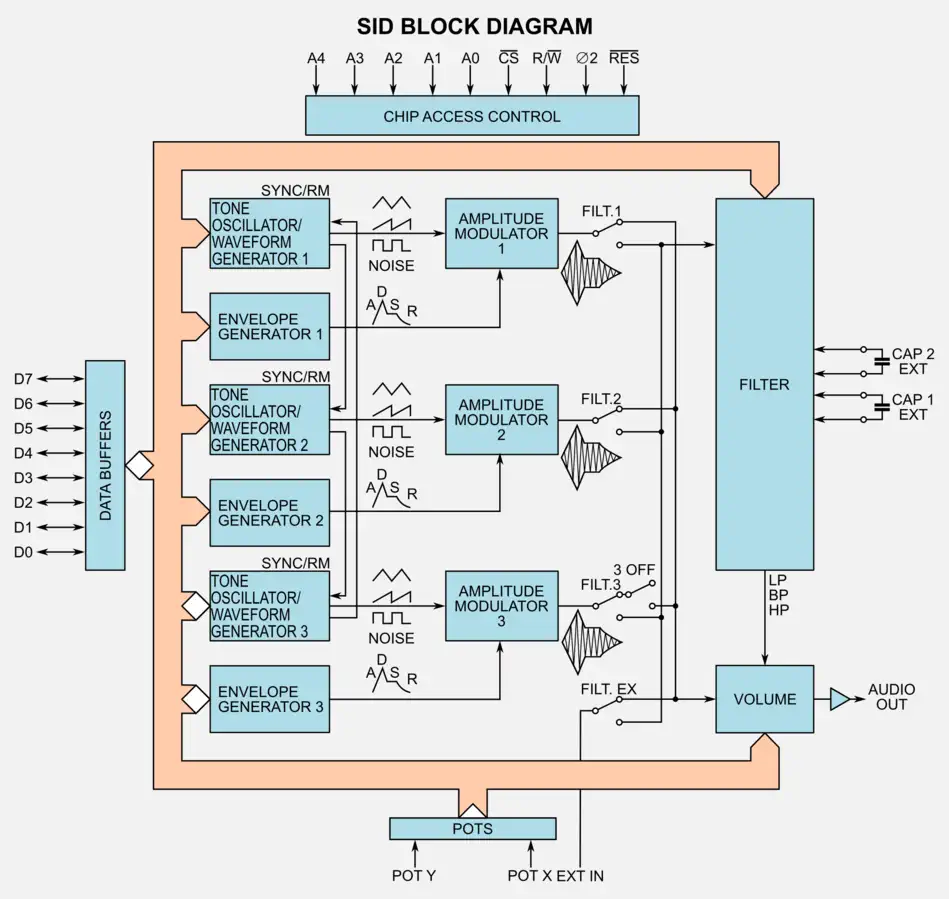Commodore 64 SX
The Commodore SX-64, also known as the Executive 64, or VIP-64 in Europe, is a portable, briefcase/suitcase-size "luggable" version of the popular Commodore 64 home computer and the first full-color portable computer.
The SX-64 features a built-in five-inch composite monitor and a built-in 1541 floppy drive. The machine is carried by its sturdy handle, which doubles as an adjustable stand. It was announced in January 1983 and released a year later, at 995 USD.
Aside from its built-in features and different form factor, there are several other differences between the SX-64 and the regular C64. The default screen color is changed to blue text on a white background for improved readability on the smaller screen. This can cause compatibility problems with programs that assume the C64's default blue background. The default device for load and save operations is changed to the floppy drive. The Datasette (cassette) port and RF port were omitted from the SX-64. Because it has a built-in disk drive and monitor, Commodore did not perceive a need for a tape drive or television connector. However, the lack of a Datasette port poses a problem for a number of C64 Centronics parallel printer interfaces, since several popular designs "borrowed" their +5V power supply from the port. This was not an issue for later interfaces which were supplied with an AC adapter power supply, or those which can use the +5V line supplied by the Centronics port (Pin #18) on the printer itself, if the printer implements it. Alternatively, a +5V supply is also available from the joystick ports. The audio/video port is still present, so an external monitor can still be used; it displays the same content as the built-in monitor. Differences electrically and in placement on the board, means that there are compatibility problems with some C64 cartridges.
SID (MOS 6581) - Sound Interface Device
SID is short for Sound Interface Device. It is the name of the sound chip that was used in the VC10, the commodore 64 and the Commodore 128. SID was developed by Bob Yannes, an employee of MOS Technology. Bob was not only an engineer but also knew a lot about music. His intention was to create a different sound chip than other devices at the time. He implemented a subtractive synthesis chip. The chip's distinctive sound is easily recognized and was clearly ahead of the ocmpitition. The SID combines analog and digital circuitry that cannot be 100% emulated, even today.
Source: C64 Wiki

MOS Technology VIC-II
The VIC-II, or Video Interface Chip II, is a chip from MOS Technology. There are a few variants:
- For NTSC: 6567/8562/8564
- For PAL: 6569/8565/8566
The VIC-II generates Y/C signals and DRAM refresh signals for the Commodore 64, Commodore MAX, and Commodore 128 computers. It is the successor of the original VIC chip used in the VIC-20 computer.
Features:
- 16 KByte address space for screen, character and sprite memory
- 320x200 graphics in 16 colors
- 40x25 Text resolution
- Capable of 8 sprites per scanline (24x21 or 12x21 multicolor sprites)
- Raster interrupt
- Smooth Scrolling
- Independent DRAM refresh
- BUS mastering for the 6502-style bus. CPU and VIC-II can access the bus during alternating half-clock cycles.
Programmers quickly learned that the VIC-II was more capable than the specifications would indicate. By manupulating the 47 different control registers, and by using machine code hooked into the raster interrupt routine (or the scanline interrupt), the chip can be programmed to do sprite multiplexing. This allows for more than 8 concurrent sprites on screen. It basically allows for the screen to be split up in different slices, giving each slice its own scrolling, resolution, color and sprite properties. This even allowed programmers to use graphics outside the upper and lower borders of the screen.

MOS 6510 CPU
The 6510 is an 8-bit MicroProcessor designed by MOS Technology. It is a modified version of the very successful 6502. The primary change in the 6510 was the addition of an 8-bit general purpose I/O port, altbough only six I/O pins were available in the most common version of the 6510.
The extra I/O pins were used for various purposes. In the Commodore 64, they were used to control bank switching, the signal lines for the Datasette tape recorder.
Source:WikiPedia


